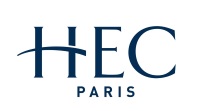No 1377: Earnings Expectations in the COVID Crisis
Augustin Landier and David Thesmar
Additional contact information
Augustin Landier: HEC Paris
David Thesmar: Massachusetts Institute of Technology (MIT)
Abstract: We analyze firm-level analyst forecasts during the COVID crisis. First, we describe expectations dynamics about future corporate earnings. Downward revisions have been sharp, mostly focused on 2020, 2021 and 2022, but much less drastic than the lower bound estimated by Gormsen and Koijen (2020). Analyst forecasts do not exhibit evidence of over-reaction: As of mid-May, forecasts over 2020 earnings have progressively been reduced by 16%. Longer-run forecasts, as well as expected “Long-Term Growth” have reacted much less than short-run forecasts, and feature less disagreement. Second, we ask how much discount rate changes explain market dynamics, in an exercise similar to Shiller (1981). Given forecast revisions and price movements, we estimate an implicit discount rate going from 10% in mid-February, to 13% at the end of March, back down to their initial level in mid-May. We then decompose discount rate changes into three factors: changes in unlevered asset risk premium (0%), increased leverage (+1%) and interest rate reduction (-1%). Overall, analyst forecast revisions explain most of the decrease in equity values between January 2020 and mid May 2020, but they do not explain shorter term stock market movements.
Keywords: Analyst Forecasts; Valuation; Discount rate
26 pages, June 9, 2020
Full text files
papers.cfm?abstract_id=3587394 HTML file Full text
Questions (including download problems) about the papers in this series should be directed to Antoine Haldemann ()
Report other problems with accessing this service to Sune Karlsson ().
RePEc:ebg:heccah:1377This page generated on 2025-06-10 11:14:56.

